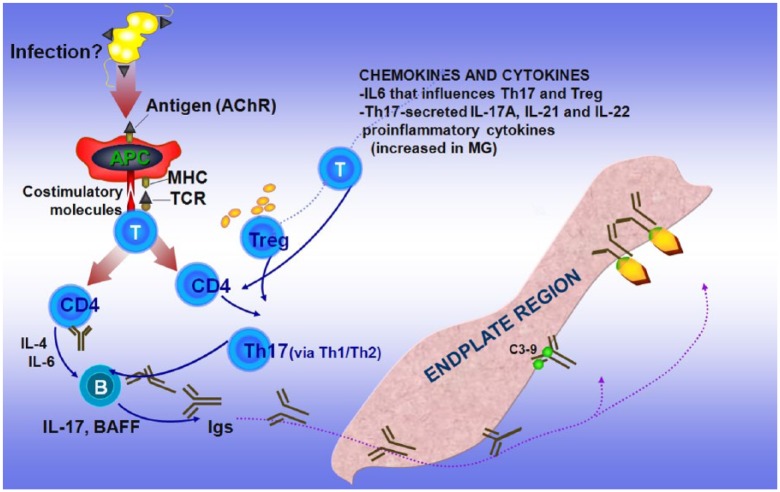Figure 1a.
Main players crucial in the immunopathogenetic network involved in myasthenia gravis (MG) as related to therapeutic targets.
Acetylcholine receptors (AChRs), presented via antigen-presenting cells (APCs) to CD4+ T cells via costimulatory molecules, lead to upregulation of cytokines that stimulate B cells to produce anti-AChR antibodies which, by fixing complement at the endplate region, cause destruction of the AChRs. Regulatory T cells (Tregs) and T helper (Th) 17+ cells, cytokines such as interleukin (IL) 6 that affect the induction of Tregs, and proinflammatory cytokines such as IL-17A, IL-21 and IL-22, which are increased in MG patients, enhance and sustain the immune imbalance (modified from Dalakas 2012).
BAFF, B-cell activating factor; Igs, immunoglobulins; MHC, major histocompatibility complex; TCR, T-cell receptor.

